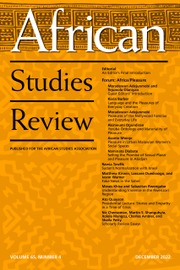Part of review forum on “Humans in Shackles: An Atlantic History of Slavery”
I am grateful for Ana Lucia Araujo’s invitation to take part in this review forum. Araujo has been bringing scholars of early Africa and the African diaspora together at conferences, in edited volumes, and online for nearly twenty years. She has written extensively across broad methodological and disciplinary fields, including art history, memory studies, and women and gender. Humans in Shackles is the culmination of Araujo’s years of study on the topic of Atlantic slavery, highlighting her considerable interdisciplinary and methodological strengths.
The virtues of the book are many, but I want to highlight three: First, Araujo does not begin her study of Atlantic slavery in the Americas; rather, her story begins in Europe. Scholars of the Atlantic world often reduce slavery to a peculiarly American phenomenon, neglecting an important piece of the puzzle in the evolution of the institution, particularly in Spain and Portugal. By highlighting the extent to which Africans permeated everyday life in fifteenth- and sixteenth-century Iberia (120–24, 203–12), Araujo at once invites readers to reconsider assumptions of American exceptionalism and, I hope, invites further research on the black presence in cities like Lisbon and Seville.
Second, unlike other synthetic histories of slavery, Araujo focuses her study around Brazil, the epicenter of slaving in the Atlantic world. Brazil was the final destination for roughly 5.5 million enslaved Africans, more than ten times the number of Africans that arrived in the United States. As Araujo demonstrates, slavery looks fundamentally different from the shores of Brazil than it does from British North America. Beyond the obvious shifts away from US and North Atlantic approaches, Humans in Shackles exposes English-language readers to the most recent Portuguese-language historiography from Brazil, across a range of different topics related to slavery. This is a particularly important professional contribution for those who don’t read the numerous works coming out of Brazil. It is also a testament to a sea change in the study of African and African diaspora topics in Brazil, where research on these topics has blossomed over the past twenty years.
Finally, Araujo shines in her interpretations of the many images, objects, and photographs throughout Human in Shackles. For those who have read her earlier books like The Gift, this will be no surprise. Araujo’s expertise in art history comes through vividly in her analysis of well-known paintings, like Debret’s “Government Employee Leaving Home with His Family.” Here, Araujo deftly unravels hierarchies of age, sex, race, and social status in a single lithograph of an elite bureaucrat and his family, including six slaves (232–34). In similar fashion, Araujo offers a deeply sensitive analysis of the enslaved mother nursing her child on the tightly packed French slave ship, La Marie-Seraphique, in St. Domingue in 1769 (310–14).
Despite the innovative approach of Humans in Shackles, some African studies readers might wish for more sustained engagement with Africa. To be fair, Araujo pays more attention to Africa than many scholars, particularly with regard to the internal workings of the slave trade and the specific provenances of Africans in the Americas. Nevertheless, as the title suggests, Araujo’s emphasis rests largely on the experiences of enslavement, sometimes to the neglect of African cultures and politics. For example, if enslaved Africans outnumbered Europeans in Brazil and Mexico, as well as cities like Lima, Cartagena, Panama City, and Havana until at least the seventeenth century, wouldn’t it be more appropriate to think about these primarily as African (mostly Angolan) cultural and political spaces? There is hardly any attention given to African languages in Humans in Shackles. Does it matter that Kimbundu was more widely spoken in some Brazilian communities than Portuguese? Or that Kikongo was the lingua franca of the Haitian Revolution? Catholic baptism, the Rosary, and Black brotherhoods earn many pages of attention, but there are only glancing mentions of vodun and orisha in the book, let alone spirits associated with ancestors or the natural world. From a political perspective: What if we were to view the Brazilian runaway slave community of Palmares as the normative political community and not the Portuguese colonial state? Araujo gestures at some of these possibilities, but they ultimately give way to emphases on the “atrocities” of European slavery in the Americas. While Araujo vividly captures the dyad of exploitation and resilience inherent in slavery, for many, “surviving” slavery was never the baseline. Slavery was, as Vince Brown has put it, a “predicament” over which Africans wrote their own robust political histories.
Capturing the balance between the histories of people as “slaves” and the histories of enslaved Africans as social, economic, and political agents has always been tricky. Araujo offers us fresh, new insights into the ways slaves navigated and resisted bondage, particularly from South Atlantic and female perspectives. This is an important corrective to earlier histories of slavery. However, the focus on slavery and slaves sometimes diverts attention from other questions that animated people’s everyday lives. It is no coincidence that asafo, asen, ndembu, kilundu, kimbanda, kisama, mahi, makandal, and vodun all (re)appear in various communities of the Americas. The persistence of these ideas was never so much about “slave” culture as it was a sign of durable African politics.

